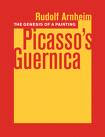I was reading through an interesting chapter in Dorothy Sayers Mind of the Maker today entitled "The Love of the Creature." My sense that she contradicts herself in varied ways throughout her book only grew as I read, and by the end of the chapter had become a full and confusing paradox. And at what point does a paradox become nonsense? How does one assess the truth of a paradox?
She concludes this chapter with an interesting statement where she affirms that the human artist is to an extant analagous to the Creator who creates what is a part of Himself and yet what is also independent of him. The paradox, of course is, how can creation be a part of the Creator and at the same time be independent of Him? She writes,
All [of the artist's] efforts and desires reach out to that ideal creative archetype in whose unapproachable image he feels himself to be made, which can make a universe filled with free, conscious and co-operative wills; a part of his own personality and yet existing independently within the mind of the maker.
Perhaps she offers her own solution to this conundrum when she writes "within the mind of the maker." One might ask, then, what kind of independence this really is.
She provides the reader with an afterthought, following her chapter "The Love of the Creature." It has little to do with what I have just commented on, but I thought it was funny and uncharacteristicly biting in comparison to the rest of her book. Discussing the relationship between fantasy in childhood and creativity she writes,
Evidence of a habit of fantasy in a child is no proof of creative impulse: on the contrary. The child who relates his fantasied adventures as though they were fact is about as far removed from creativeness as he can possibly be; these dreamy little liars grow up (if into nothing worse) into the feeble little half-baked poets who are the irritation and despair of true makers.
Maybe she was just having a bad day.
Subscribe to:
Post Comments (Atom)




No comments:
Post a Comment